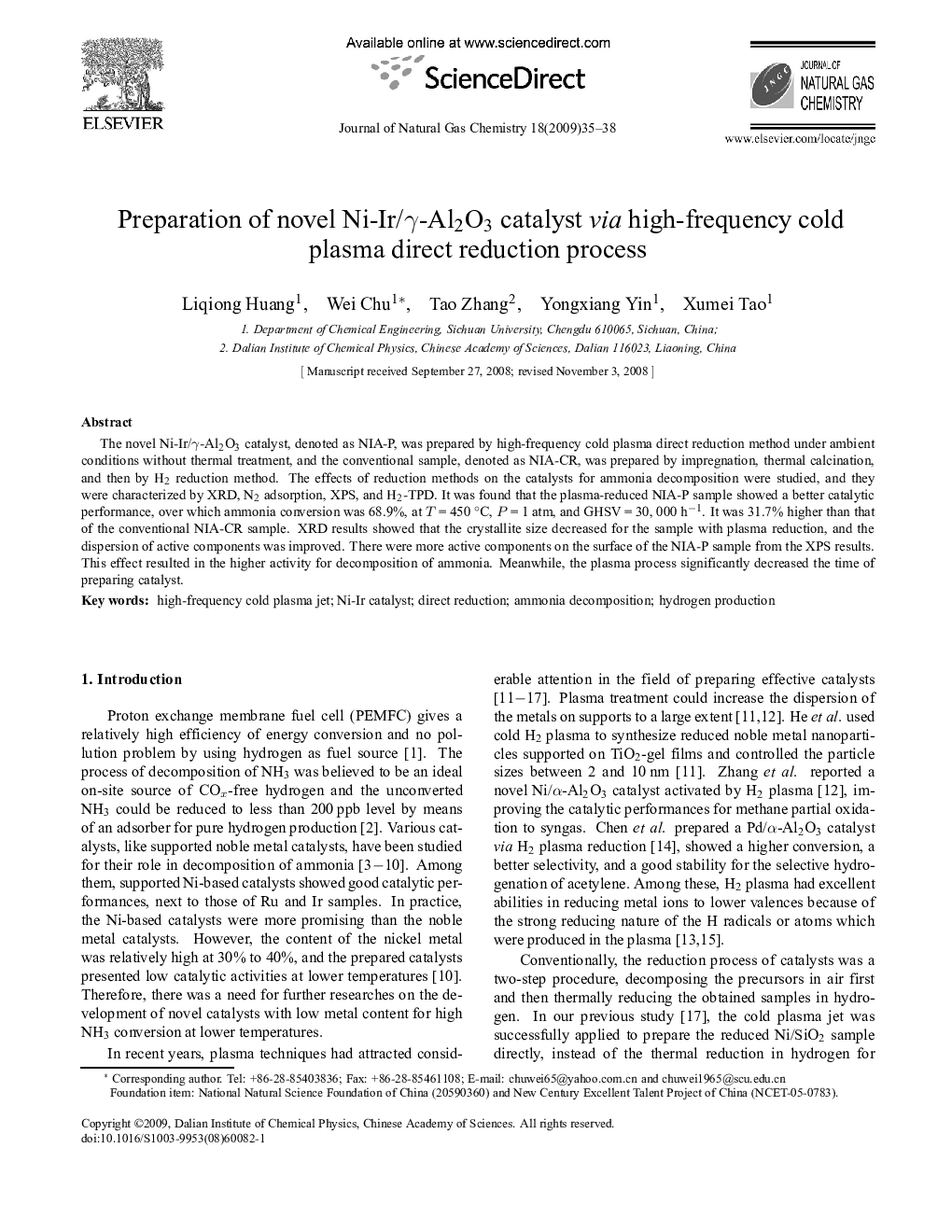| Article ID | Journal | Published Year | Pages | File Type |
|---|---|---|---|---|
| 71652 | Journal of Natural Gas Chemistry | 2009 | 4 Pages |
The novel Ni-Ir/γ-Al2O3 catalyst, denoted as NIA-P, was prepared by high-frequency cold plasma direct reduction method under ambient conditions without thermal treatment, and the conventional sample, denoted as NIA-CR, was prepared by impregnation, thermal calcination, and then by H2 reduction method. The effects of reduction methods on the catalysts for ammonia decomposition were studied, and they were characterized by XRD, N2 adsorption, XPS, and H2-TPD. It was found that the plasma-reduced NIA-P sample showed a better catalytic performance, over which ammonia conversion was 68.9%, at T = 450 °C, P = 1 atm, and GHSV = 30, 000 h−1. It was 31.7% higher than that of the conventional NIA-CR sample. XRD results showed that the crystallite size decreased for the sample with plasma reduction, and the dispersion of active components was improved. There were more active components on the surface of the NIA-P sample from the XPS results. This effect resulted in the higher activity for decomposition of ammonia. Meanwhile, the plasma process significantly decreased the time of preparing catalyst.
